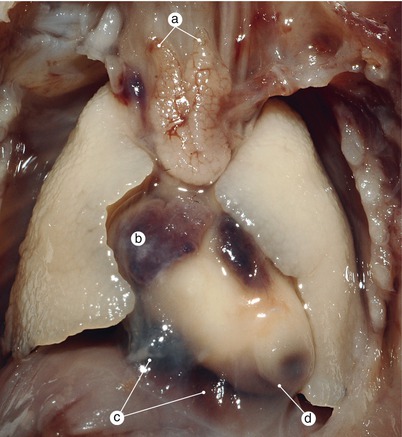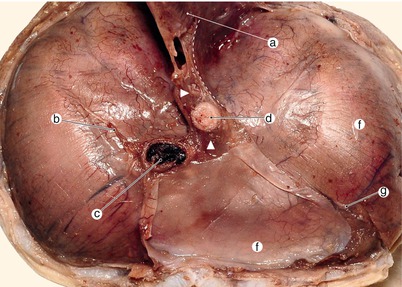(1)
Anatomy Department, University of Medicine and Pharmacy Carol Davila, Bucharest, Romania
Abstract
The heart is a thoracic musculocavitary, intrapericardial organ, situated in the middle mediastinum. Its main function is that of a suction pump which works simultaneously on two almost independent circuits. The heart has also a paraendocrine function due to some polypeptides production. The heart has a specific autonomy, justified by the presence in its structure of the cardiac conduction system. At the same time the heart is an organ which is under the central nervous control (both nervous and endocrine), perfectly integrated in the entire body economy and placed under the influence of the great regulating reflexes. Not least, the heart represents a vast territory of pharmacological reception, with varied receptors which can be manipulated in a specific manner.
3.1 Definition
The heart is a thoracic musculocavitary, intrapericardial organ, situated in the middle mediastinum. Its main function is that of a suction pump which works simultaneously on two almost independent circuits. The heart has also a paraendocrine function due to some polypeptides production. The heart has a specific autonomy, justified by the presence in its structure of the cardiac conduction system. At the same time the heart is an organ which is under the central nervous control (both nervous and endocrine), perfectly integrated in the entire body economy and placed under the influence of the great regulating reflexes. Not least, the heart represents a vast territory of pharmacological reception, with varied receptors which can be manipulated in a specific manner.
We mentioned earlier about “two almost independent circuits” because:
in the pulmonary circuit interpose the so-called arterial segments of control (arterio-arterial anastomoses between branches of the pulmonary arteries and that the bronchial arteries) through which, in a small percent, the two circulation systems (greater and lesser) are connected at the level of the bronchial wall.
someseptal defects may exist, connecting the two circuits, but due to their small dimensions presents no significant hemodynamic effects.
3.2 Location
The term of location refers to the heart placement into an anatomical circumstance, in relation with the neighboring organs.
The heart is situated in the middle mediastinum (Fig. 3.1). This is a topographical region limited by:


Fig. 3.1
Four months old heart, situated in the middle mediastinum. We may observe the transparent membranous pericardial sac and also the aspect of the thymus. a Thymus, b right atrium, c pericardial sac, d apex
anterior, by a coronal plane tangential to the pericardium
posterior, by a coronal plane which passes posterior and tangential to the tracheal bifurcation, the pulmonary veins and the pericardium covering the left atrium.
superior, by a transverse plane passing through the T4 vertebra and the sternal angle. This plane is situated inferiorly to the aortic arch and the azygos arch.
inferior, the middle mediastinum is limited by the diaphragm, more precisely the heart sits on the diaphragmatic central tendon (Fig. 3.2).




